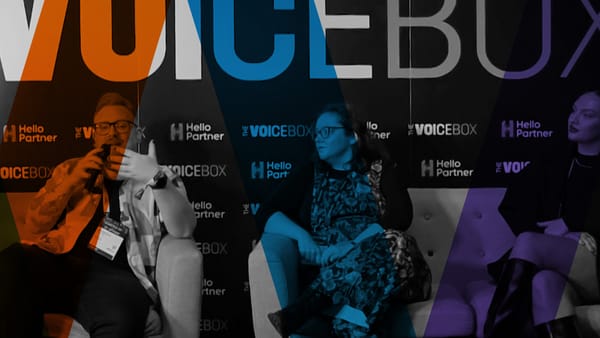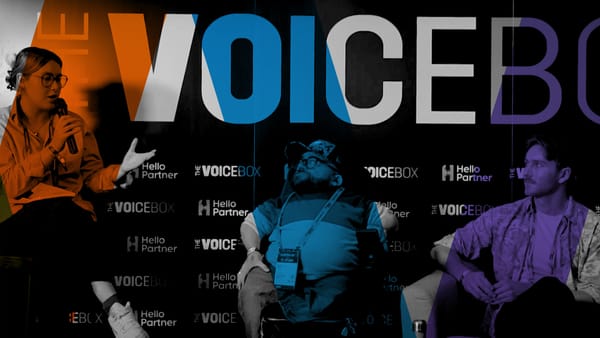When we hear the word “marketing,” most people think about advertisements: billboards, banner ads, that one Spotify commercial that plays every five songs. If you’re as smartphone-addicted as I am, you might think about promotional emails, in-app notifications, or your favourite brand’s curated Instagram feed. But what brands themselves have to say about their products only plays a partial role in the decisions of consumers to buy them.
In fact, people tend to place more trust in sources that aren’t directly affiliated with brands, like friends, reviewers, and (you guessed it) influencers. In the marketing industry, this “word-of-mouth” insight is called earned media. In contrast to owned media—content that is created by a brand—earned media encompasses any and all content about a brand that doesn’t come directly from that brand.
Earned media is everywhere. It’s your favorite YouTuber using new beauty products in their latest tutorial video, and the five star Yelp reviews that sold you on that local restaurant. In fact, I’ve already driven earned media for four brands so far in this article.
Because earned media is integral to consumers’ decision-making, it’s important that brands are equipped with the right tools to inspire earned media, then assess its impact. Let’s dive into some tried-and-true strategies for scaling your earned media footprint through influencer marketing, and using data points like Earned Media Value (EMV), Tribe Dynamics’ proprietary metric for quantifying the value of digital earned media, to understand—and improve—your long-term performance.
Retain influencers by building mutually empowering relationships
You can’t control what your moody aunt tells her book club about your brand’s products—and, thankfully, her opinion doesn’t matter much anyway. If you’re looking to build a sustainable and impactful earned media presence, the first step is to build relationships with content creators that other content creators (and everyday consumers) trust and look up to that is, influencers. Savvy brands boast entire communities of loyal influencers who post about them on a consistent basis.
Brands connect with new influencers through a variety of strategies, including engaging with and reposting their content, gifting products, and hosting virtual or in-person events. (A note here: your most impactful influencers are probably already talking about you.) But while discovery is a necessary part of fostering a robust family of advocates, maintaining those relationships is the ticket to lasting success. Brands that retain influencers over time—that is, continue to win mentions from the same group of content creators—see much steadier long-term growth in EMV than brands with “leaky bucket” communities, that repeatedly gain and lose fans.
The best way to keep influencers talking about your brand is to make sure that they genuinely enjoy working with you. Free product and fun experiences are nice, but keep in mind that bloggers are also professionals who are as eager to grow their audiences, and build their personal brands, as you are to drive exposure for your brand.
By furnishing influencers with valuable, genuine opportunities for content creation and career advancement, you can ensure that your relationships with them are mutually beneficial, and therefore more likely to continue into the future.
Prioritise product quality
Influencers don’t become influencers by accident. They’re passionate about their areas of expertise, and it’s through knowledgeability and confidence that they maintain the trust of their followers. So, it’s not surprising that, when surveyed, influencers overwhelmingly rated product quality as the No. 1 reason that they posted about brands. Curious whether or not your offerings are up to bloggers’ standards? Start by exploring any existing conversation about your products.
If you encounter criticism, don’t tune it out: instead, treat influencers as industry authorities, and take their opinions into account in the product development process. If you have the resources and buy-in, consider partnering with an ambassador on your next launch: giving a content creator agency in the creation and marketing of a product is sure to inspire not only their enthusiasm but also the enthusiasm of their influencer friends.
Take a holistic approach to earned media measurement
EMV can help you gauge the overall success of your influencer marketing program, and benchmark your performance against your competitors—but it’s important to understand that EMV doesn’t exist in a black box. The size of your influencer community, how frequently, on average, influencers are posting about you, and how compelling their content is all contribute to growing your brand’s social footprint—and keeping tabs on these stats will over you more granular insight into how effectively your program is working, and where you can focus your efforts moving forward. Here are some key metrics you can use to gain a holistic understanding of your earned media program’s impact.
- Community Size: Community size refers to the number of influencers who post about a brand over a given time period. Because boasting more advocates increases brands’ ability to reach other content creators and consumers, and speaks to their overall popularity, top EMV-driving brands tend to enjoy large, growing communities.
- Posting Frequency: Your community’s posting frequency denotes how many times, on average, influencers mention your brand over a given time period. Broadly speaking, truly passionate content creators will post more often than those with lukewarm relationships to your products, so tracking posting frequency enables you to reliably gauge the dedication and enthusiasm of your influencer family.
- Influencer Potency: The potency of your influencer network represents the average EMV generated by each content creator in your community, over a given time period. Several factors contribute to potency, including posting frequency, the size of influencers’ followings, and how much engagement their content receives. Relative to posting frequency, potency offers a more complete view of the average impact your fans’ content has on audiences.
- Influencer Retention: Retention is the single most important metric to keep in mind when evaluating your influencer program’s performance. On a technical level, retention measures what proportion of the content creators who posted about you in a given time period continue to post about you in the same consecutive time period (eg., how many of the influencers that mentioned you last quarter also mentioned you this quarter?).
I’ve already emphasized that retention is correlated with long-term growth in your brand’s earned media, and that’s because loyal fans are, and will continue to be, your biggest champions. Not only will they post more frequently, and create more impactful content for their audiences, than less invested influencers, they’ll also organically recruit new advocates through authentic, contagious excitement.
In itself, earned media isn’t a tough concept to grasp: people who like you talk about you, and the same goes for influencers. Scaling an effective, sustainable earned media program isn’t quite so simple. But by tailoring your outreach to genuinely empower content creators, leveraging appropriate tools to track metrics that matter, and adopting a data-driven approach to honing your strategy, you can build a family of devoted, enthusiastic online advocates whose voices will continue to amplify.
Want to contribute the next WTF article? Send your idea and synopsis to editorial@performancein.com – we would love to hear from you.








